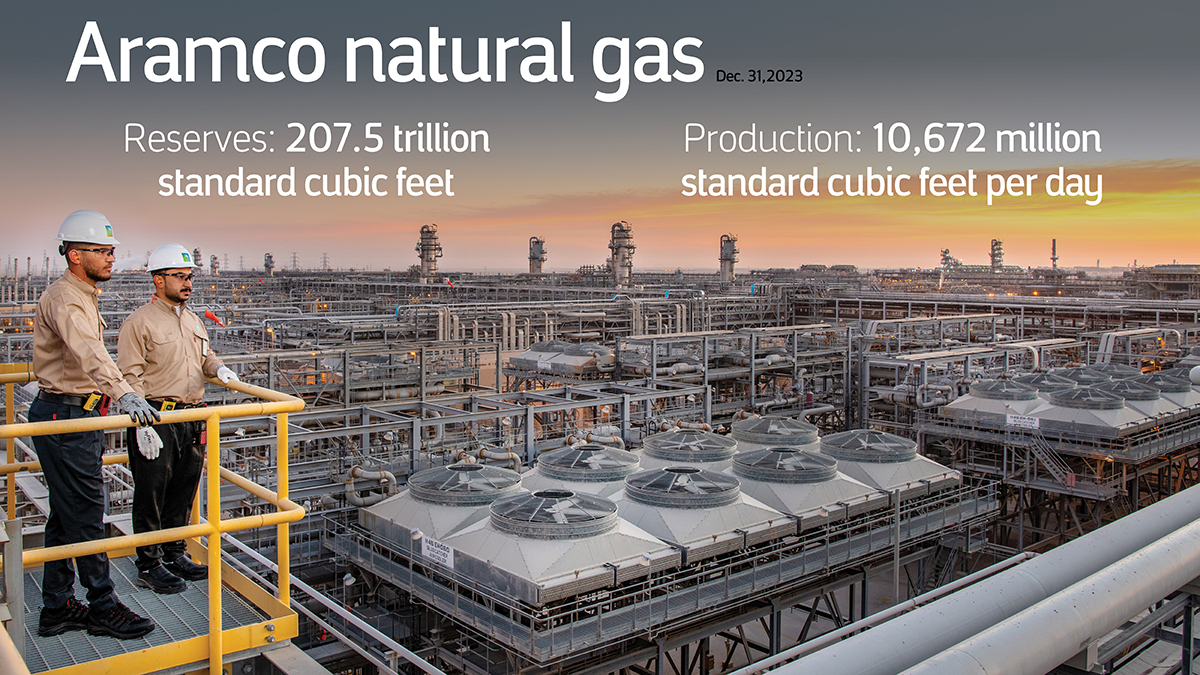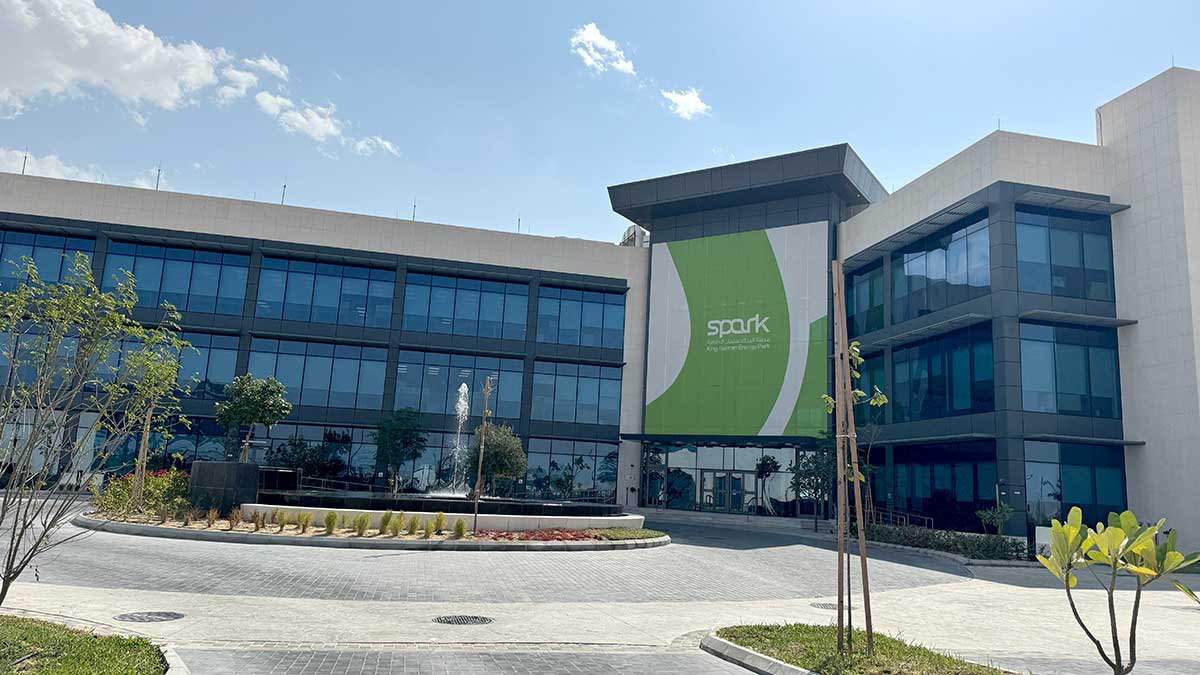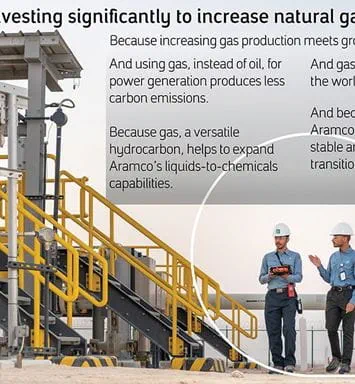Our Gas Goals
Gas: Meeting the Kingdom’s energy needs, accelerating the energy transition

Global July 23, 2024 - By
Investing billions in gas
Aramco’s significant capital investment to boost Saudi Arabia’s natural gas production advanced recently when more than $25 billion of 69 engineering, procurement and construction contracts were awarded to several local and international companies.
At an event attended by Saudi Energy Minister HRH Prince Abdulaziz bin Salman, contracts were ceremonially presented to handle the third Master Gas System (MGS) expansion phase, and Jafurah’s second phase development.
Speaking at the ceremony held at Aramco headquarters on June 30, Amin Nasser, Aramco president and CEO, said the contracts for the two mega-projects would take Aramco’s natural gas capabilities to the next level.
Jafurah repositioning Arabian gas
“By generating an anticipated 2 billion standard cubic feet per day of sales gas by 2030, this bold initiative will strengthen Saudi Arabia's position as one of the top natural gas producers in the world,” said Nasser, commenting on Jafurah.
Adding that Jafurah would also provide a key input for blue hydrogen production, Nasser said this supported Aramco’s ambition to be a world leading supplier of this lower carbon energy.
“And because Jafurah has the potential to produce approximately 420 million standard cubic feet of ethane per day and around 630,000 barrels per day of NGL and condensate, the project has great potential to add value down the petrochemicals supply chain,” said Nasser.

An alternative energy source, natural gas consists primarily of methane, which at its molecular core, is simply just one carbon atom surrounded by four hydrogen atoms (CH₄).
This simple particle composition makes gas an alternative and affordable fossil fuel for power generation.
Gas is also a major feedstock for the production of ammonia, which is used in fertilizer production and for the production of blue hydrogen, which will potentially play an important role in providing lower-carbon energy in the future.
It is also used in many industrial processes, such as making fertilizers, glass, steel, plastics, paint, and fabrics.
50% in-Kingdom electricity supply from gas
Nasser described Aramco’s MGS as being the backbone of the Kingdom’s industrial development for nearly five decades.
To expand the reach of the MGS, 17 new gas compression trains and 4,000 more kilometers of pipeline will be added to its existing gas supply network to increase its delivery capacity to approximately 3.2 billion standard cubic feet per day.
Saudi Arabia has developed 36 industrial cities as part of the Kingdom's economic transformation.
Significantly, the third expansion of the MGS will connect several additional cities to the gas network for the first time.
“That will help accelerate industrialization, drive economic growth, and create dynamic new jobs for Saudis,” said Nasser.
“The expansion will also make large contributions to the Kingdom’s goal of generating 50% of its electricity from gas by 2030,” he noted.
Saudi Arabia, one of the world’s leading oil exporting countries, also has one of the highest levels of oil consumption.
Aramco’s gas strategy reserves crude oil for better economic use, and supports the Kingdom’s plans to stop burning oil for domestic power generation and water desalination,.
International gas investment
Beyond its own gas reserves, Aramco announced in September that it was entering the global liquefied natural gas (LNG) business by acquiring a minority stake in EIG-managed MidOcean Energy, who completed acquisitions of stakes of LNG projects in Australia in 2024.
In June, Aramco and Sempra announced a non-binding Heads of Agreement for a 20-year sale and purchase agreement for LNG offtake of 5.0 Mtpa from the Port Arthur LNG Phase 2 expansion project
LNG is natural gas that has been cooled to a liquid state suitable for shipping and storage, bringing its volume to about 600 times smaller than its gaseous state.
GAS TERMS
Raw: Gas prior to processing.
Wet: Contains moisture/water.
Dry: Contains no moisture/water.
Sweet: Minimal treatment as no hydrogen sulfide present.
Sour: Hydrogen sulfide is present.
Lean: No liquid hydrocarbons require removal.
Rich: Contains liquids such as ethane, propane, or butane.
Sales: Gas after processing.
Natural Gas Liquids (NGL): Heavier hydrocarbons extracted from gas for use as a feedstock in chemical plants.
Liquefied Petroleum Gas (LPG): A mix of propane and butane gases with a variety of uses.




